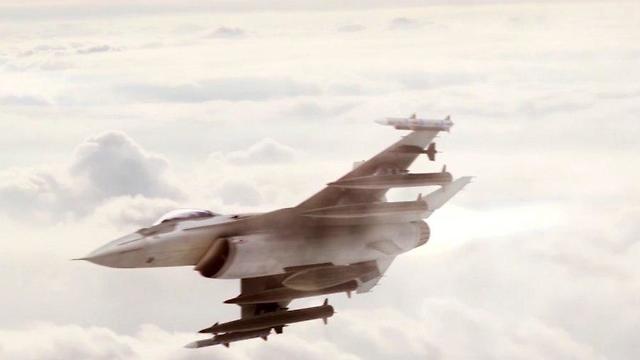
IMS, IAI develop missile undetected by enemy
Two of Israel's big military industries have developed a new air-to-surface missile designed to be launched merely 150 km from the target, making the missile undetectable by the enemy's forces; the IAF is likely to purchase the missile to improve its surgical high-precision strikes with minimum collateral damage.
The "Rampage" missile is designed to be launched from a fighter jet 150 km away from the target, meaning it will not be detected by the enemy's detection and interception systems.
Israel's two big military industries have held over the past year joint experiments which have shown the "Rampage" is operational.
The production process and sale of the 4.7-meter long missile—that weighs half a ton including its rocket engine, and has a relatively small warhead that weighs some 150 kg—will commence during the upcoming year.
The Israel Air Force (IAF) is likely to purchase the missile for its operational needs.
Among the missile features are its ability to control and monitor the extent of its shrapnel, which will make its strike surgical, accurate and with minimum collateral damage despite the fact the missile spends a lot of time in the air from the minute it is launched until it strikes its target.
The stand-off method—long-range artillery launching—has been used by the IAF for many years.
However, the IMS and the IAI say that in light of the new ability developed—launching the missile up to 150 km from the target—the ratio between the accuracy and the effectiveness of the strike and the missile's large distance from the fighter jet is its most significant advantage.
The IAI's Missiles and Aerospace Division's manager, Boaz Levi, told Ynet that the missile's cost is about one third of the cost of similar missiles being sold across the world.
The Rampage already has a potential buyer, however the IAI did not reveal its identity.
The missile will be adjusted to all offense platforms including the IAF's F-15, F-16 and F-35 fighter jets and will be used against anti-aircraft batteries, enemy's headquarters, armament storages, and logistic bases among others.
The missile's warhead will be guided by a GPS system, which will allow him to strike during the day as well as the night and in any weather conditions including fog and cloudiness.
The GPS system's Achilles' heel is that it can be relatively easily disrupted. Therefore, the missile's developers added an additional algorithm-based navigation system as backup that will give the missile immunity.
The missile will have two kinds of warheads, with the first one designed for penetrating armor protected targets such as bunkers and those immune to shrapnel damage.
IMI's Fire Power Division's Manager Eli Reiter said, "Sending four fighter jets carrying four Rampage missiles allows us to strike under conditions we've never had before."
The IAF's need of precision strikes has grown over the past few years, an example of that is the strike against bases and weapon storages in Syria, for which the IDF has assumed responsibility a month ago.
Syria's army launched hundreds of anti-aircraft missiles as retaliation to the IDF's multiple strikes. At the beginning of 2018, a Syrian missile shot down an IAF's f-16 fighter jet in the Upper Galilee.
The IAF attacked two weeks ago more than 50 terror targets in Gaza—the most populated area in the world—while implementing the maximum-precision technique resulting in no casualties during the strike.
IMI's Reiter explained that during the two past decades there has been a tendency to decrease the fighter jets' artillery weight in order to make the strikes as accurate as possible and diminish possible collateral damage all across the world.













